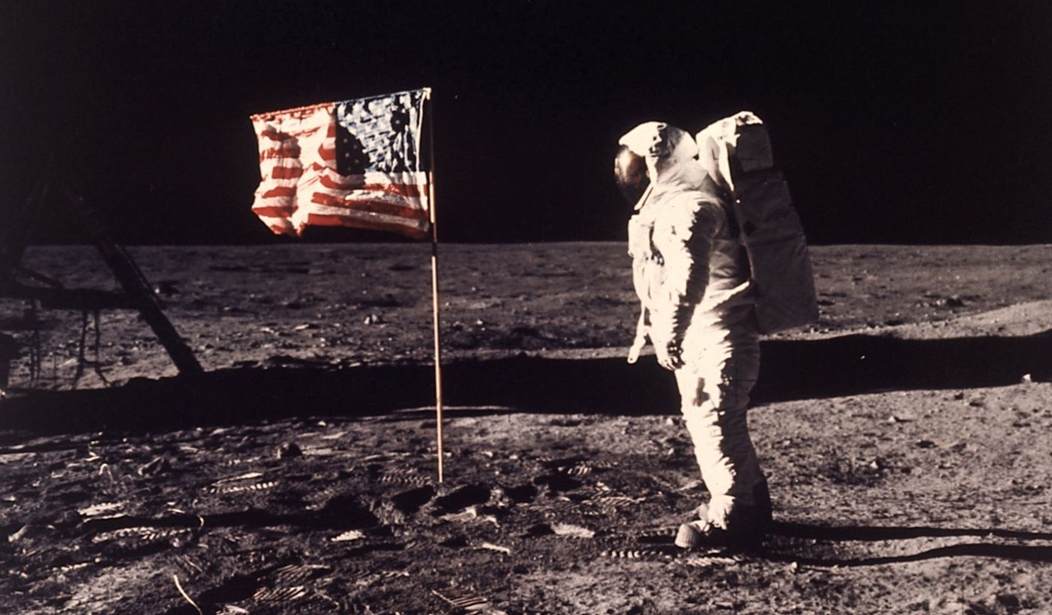Two places in the universe echo with the name Buzz Aldrin. One is the moon, where Buzz walked with Neil Armstrong 51 years ago last month. The other is New Jersey, where Buzz grew up, flew at age two with his father, won a state football championship, was inducted into New Jersey’s Hall of Fame, and still returns.
A dusty spaceport on the moon called Tranquility Base bears the plaque Buzz and Neil left. It reads, “We Came in Peace for All Mankind.” Maybe time has come to recognize another landing spot honoring New Jersey’s favorite son. How does “Buzz Aldrin-Newark International Airport” sound?
In 1930, in a small New Jersey town called Montclair, young Edwin “Buzz” Aldrin – his nickname given by his sister – arrived on the leading edge of history. His early years were formative. In many ways, they launched him on that unique trajectory for the future.
His courage is well-known but worth reviewing. As a high schooler, he played center on that New Jersey State Championship team, weighing in at 160 pounds. As a young cadet at West Point, he did New Jersey proud: first in class as a plebe, third on graduation.
As a newspaper headline proclaimed on last year’s 50th anniversary of the Apollo 11 mission, his New Jersey hometown “helped put Buzz Aldrin on the Moon.” Interestingly, the official 50th anniversary attended by other Apollo astronauts at the Reagan Library featured Tommy James, another inductee into New Jersey’s Hall of Fame. No coincidence, as the two share an affinity for home.
New Jersey is a hub for Aldrin, from there he pushed the envelope, first in the military flying 66 combat missions over Korea, two with MiG 15 shootdowns, two Distinguished Flying Crosses, and three Air Medals. Those missions were flown in an F-86 Sabre. By the time he was flying the frontier along East Germany, he was in the F-100 Super Saber.
Recommended
Then time sped up for what seems a man of destiny. Aldrin completed a doctorate in astronautical engineering, focused on the physics of “manned orbital rendezvous.” That topic would become vital for him – and America – just ahead.
Accepted to NASA’s fledgling astronaut corps in 1963, Aldrin’s thesis served as an important reference point, backing up John Houbolt’s pioneering idea of lunar orbit rendezvous. Wernher von Braun was not convinced rendezvous at the moon was such a good idea. In time, however, he agreed. That was step one.
On NASA’s Gemini 12 mission flown with Jim Lovell, later of Apollo 13 fame, Buzz found himself in the unusual position of conducting an orbital rendezvous. Beyond his successful spacewalk, they needed to prove a manned spacecraft could link to a target. To do so, they needed radar. The radar failed. Buzz ended up using charts he created to manually dock. The feat was stunning and significant. It proved that, if ever needed, it could be done at the moon.
Which brings us to the moon. Buzz Aldrin, Neil Armstrong, and Mike Collins took Apollo 11 to lunar orbit. Then Buzz, as the Lunar Module Pilot, and Neil took the LEM to the moon’s surface. On the way down, they got two abort alarms. They carried on. Landing, they encountered unexpected boulders, which meant they landed with less than 30 seconds of fuel.
Out on the surface, where Buzz weighed less than he had as a New Jersey high school football center, the two men set up experiments. Back inside the LEM, they accidentally snapped off the ascent engine’s circuit breaker. Calmly, Buzz ended up using a pen to ignite the ascent engine, a bit of Jersey boy ingenuity. Leaving, he used youthful humor, “number one on the runway.”
More recently, as an American of good heart as well as good mind and courage, the old aviator and pioneering astronaut used another pen to lift people with a column he wrote comparing current quarantine requirements with Apollo 11 quarantine. He offered lessons that truly lifted spirits.
So, all this vectors to a simple question. While various leaders have toyed with the idea, why not celebrate this 90-year-old’s unique contributions to global aviation, America, and human history by naming Newark Liberty International Airport after him?
In an era of disheartening partisanship, here is a positive, non-partisan, whole-hearted, all-American, ever-amiable citizen leader – a pioneer, thinker, earnest doer, unassuming patriot, and powerful figure to celebrate. And he is still among us. How nice would it be for a boy who grew up in Montclair, New Jersey to land at an airport named in honor of his efforts? Time is as short as his shadow is long, but on this anniversary, it is worth thinking on.
John Cody Mosbey is a retired USAF colonel with a little bit of shared New Jersey heritage – he flew as an F-4E crewmember out of McGuire, AFB when he was a staff officer in the Washington, D.C. area. Mosbey has recently successfully defended his PhD thesis in Russian geopolitics at Trinity College, Dublin.
























Join the conversation as a VIP Member